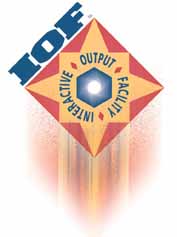Miscellaneous Changes
Enable Command
IOF line commands can be entered in the COMMAND area by
preceding the command with menu number(s) or ranges of menu
numbers. For example, "3 5-19 C" will cancel items with
menu numbers of 3, and 5 through 19. By default, the maximum
number of items that can be manipulated with a single command is
99.
The ENABLE command on the IOF Job List Menu (and
other IOF list panels) overrides the maximum number of rows that
can be manipulated with a single IOF command. For example, the
commands shown below will cancel jobs, groups, or data sets 1
through 9999:
ENABLE 9999
1-9999 C
The maximum acceptable value for the ENABLE command parm has been
increased from 32,767 to 999,999.
Job Summary Panel ARRANGE Command
The ARRANGE command, and associated CUT and
PASTE
commands, can now be used on the Job Summary Panel data set
section to re-organize the display of data set information. These
commands were not available in previous releases on this panel.
Index Entries
The maximum number of IOF data index entries has been increased
from 32,767 to 999,999. The SLAMRUN, SLAMOPER and SLAMMEMO tasks build indices
to system log information. Individual sites can define indices to information
of local interest. System log data can be unpredictable, and occasionally a very
large number of items needs to be indexed.
This change applies to all IOF indexing. The BUILD INDEX (BI) command builds
IOF indices to any sysout data. BI is a data set line command
on the Job Summary Panel and a primary command from IOF Browse.
Running Job Restart Command
The RESTART (abbreviated E) line command for running jobs causes
a running job to be rerun after the job completes execution. Rerunning some
production jobs can have dire consequencies. We have decided that the E
abbreviation for the restart command is too easy to enter by mistake, and that
users should be encouraged to enter the longer RES line command to
request the restart function.
Release 7H has been modified to display a confirmation panel when the E
line command is entered. The user can confirm or deny the restart function.
The panel tells the user that the confirmation panel can be avoided by entering
the longer RES line command.
